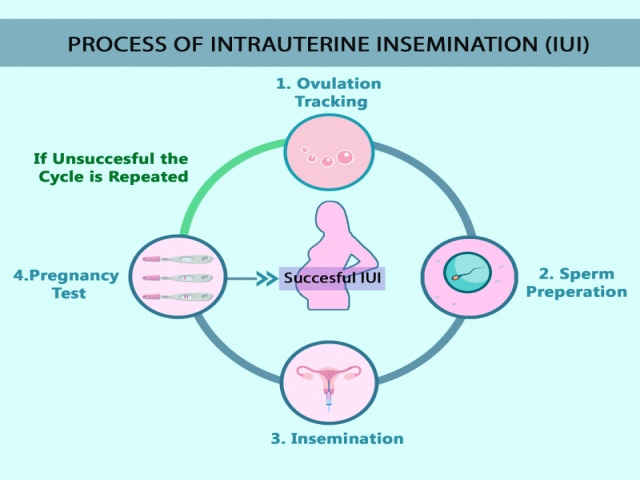IUI or Intra Uterine Insemination is one of the ideal ways and the first line of treatment to help individuals or couples to conceive before moving on to advanced procedures such as IVF-In Vitro Fertilization.
IUI is a simple procedure and takes a couple of minutes to complete. If you are one who is considering IUI, then continue to read this article as this would help you better understand IUI and get expert answers for the top frequently asked questions about this procedure.
What is IUI Treatment
Intrauterine insemination is a fertility treatment that involves placing sperm inside a woman’s uterus around the time of ovulation to facilitate fertilization. It is also called artificial insemination. It may be done with or without medication.
The goal of IUI is to increase the number of sperms that reach the fallopian tubes and subsequently increase the chance of fertilization.
Who is a fit candidate for IUI?
- Patients whose partner has a mild decrease in sperm count/motility
- Clinical conditions of the uterus, Cervical scar tissue formed from past procedures which may interfere with the sperms ability to enter the uterus
- Unexplained subfertility
- Ejaculatory dysfunction
Treatment Cycle-steps

Step 1: In an IUI cycle, hormone tablets or injections are given to stimulate the ovaries.
Step 2: We monitor each follicle, (small fluid-filled sac containing the egg) and check for its growth in response to the medication through scans. In one treatment cycle, you might need three or four scans.
Step 3: When 1 – 3 follicles reach the mature stage, an injection is administered, to facilitate egg release approximately 36 hours later.
Step 4: The healthy and best swimming sperm are separated from the semen by special preparation techniques for artificial insemination.
The procedure of insemination is not at all painful and takes just about 5 minutes. The sperm is inserted well within the womb with the help of a fine soft tube called a catheter. You are advised to lie down for 15 minutes following the procedure.
Step 5: You will be advised to attend the clinic after two weeks following the IUI procedure, for a urine pregnancy test. If your test for pregnancy is positive we advise you a date for follow-up pregnancy scan. However, if the test is negative the next treatment cycle can be started from the 2nd day of the period. One might need more than one cycle and if a pregnancy has not been achieved after 3 cycles we proceed to discuss with further treatment options.
Complications
- Multiple pregnancies in 5-10% of patients
- Overstimulation – when more than 3 dominant follicles has developed in response to fertility drugs. In such cases your doctor may cancel the IUI cycle.
Success rate with IUI
- We follow evidence-based protocols to ensure the highest success rates. The rate of success in one cycle of IUI in general is around 20-25%.
- The couple can be offered upto a maximum of 6 cycles.
- The majority of the pregnancies with IUI usually happen in the first 3 cycles.
- If at the end of 3 cycles, pregnancy does not happen, further options like Laparoscopic key-hole surgery followed by 3 more cycles of IUI or IVF are discussed.
Also read: Understand the Procedure Before Opting For IVF Treatment.
Which Factors can control the success rates of IUI?
IUI success rates considerably vary and depend on various factors like:
- Woman’s age
- Type of ovarian stimulation drugs used
- Duration of infertility
- Cause of infertility
- The number and quality of motile sperms.
For your queries, contact svyjayanthi99@gmail.com.



